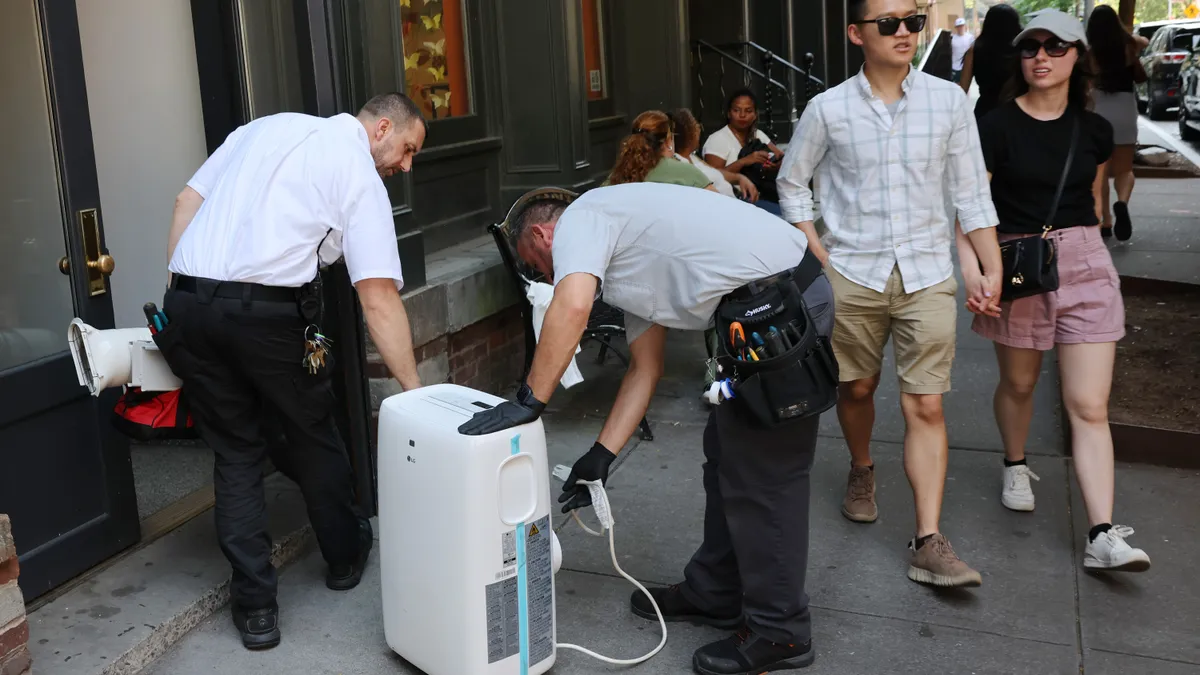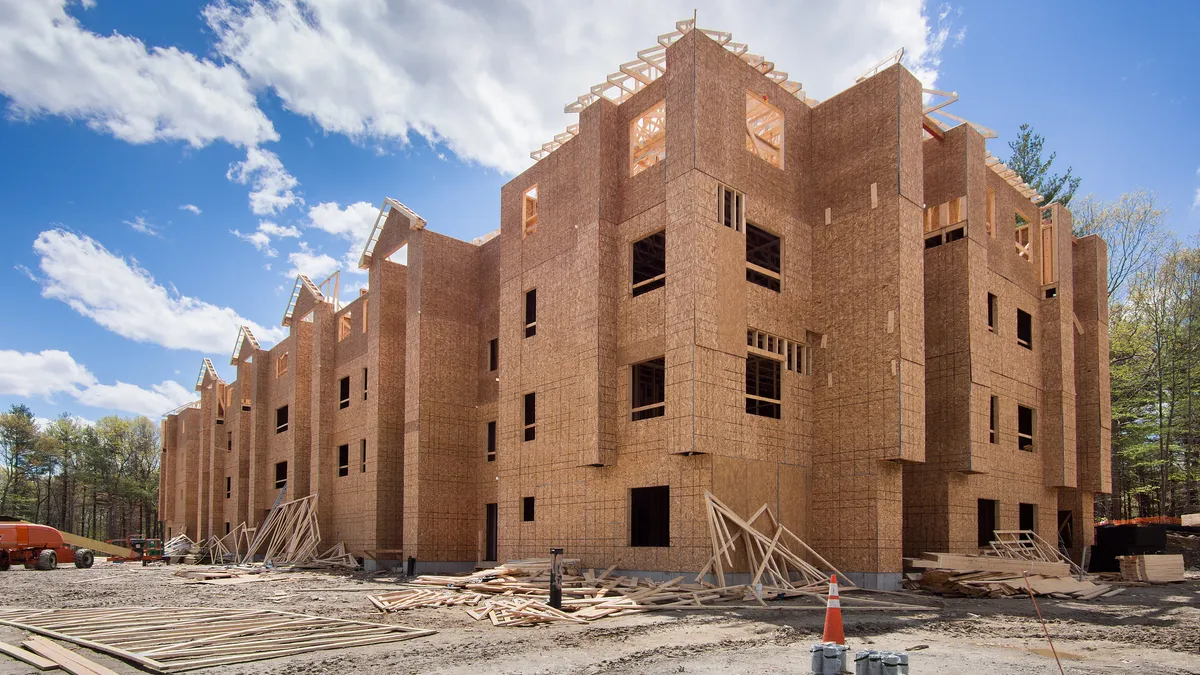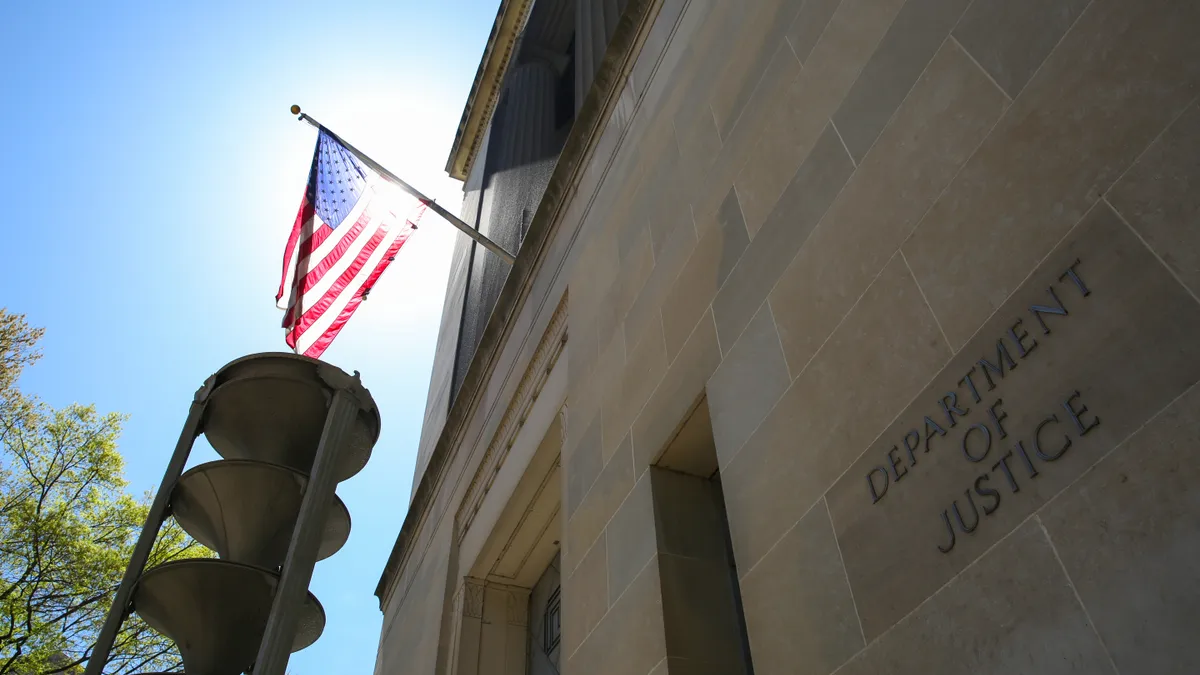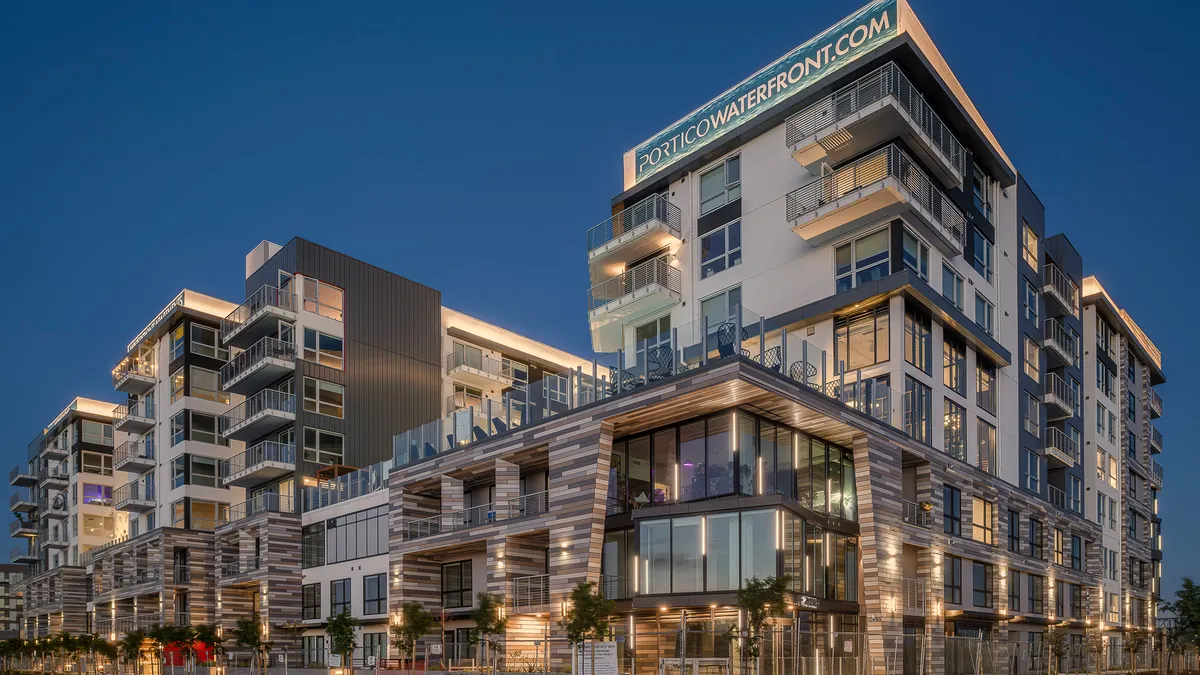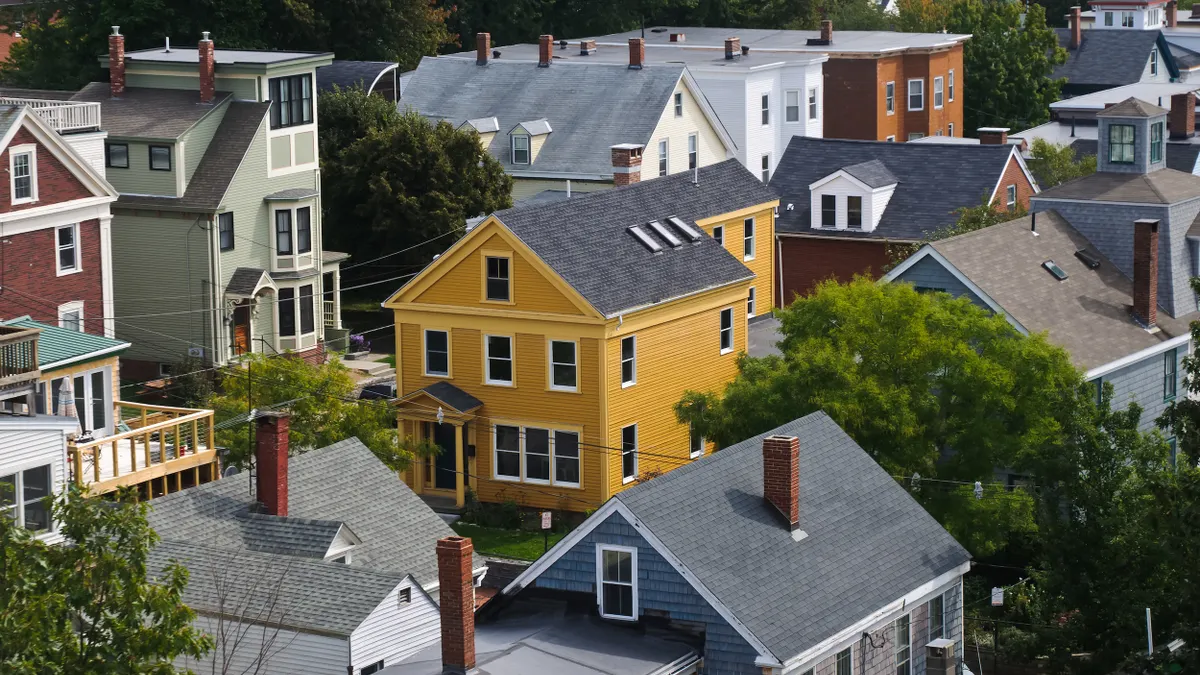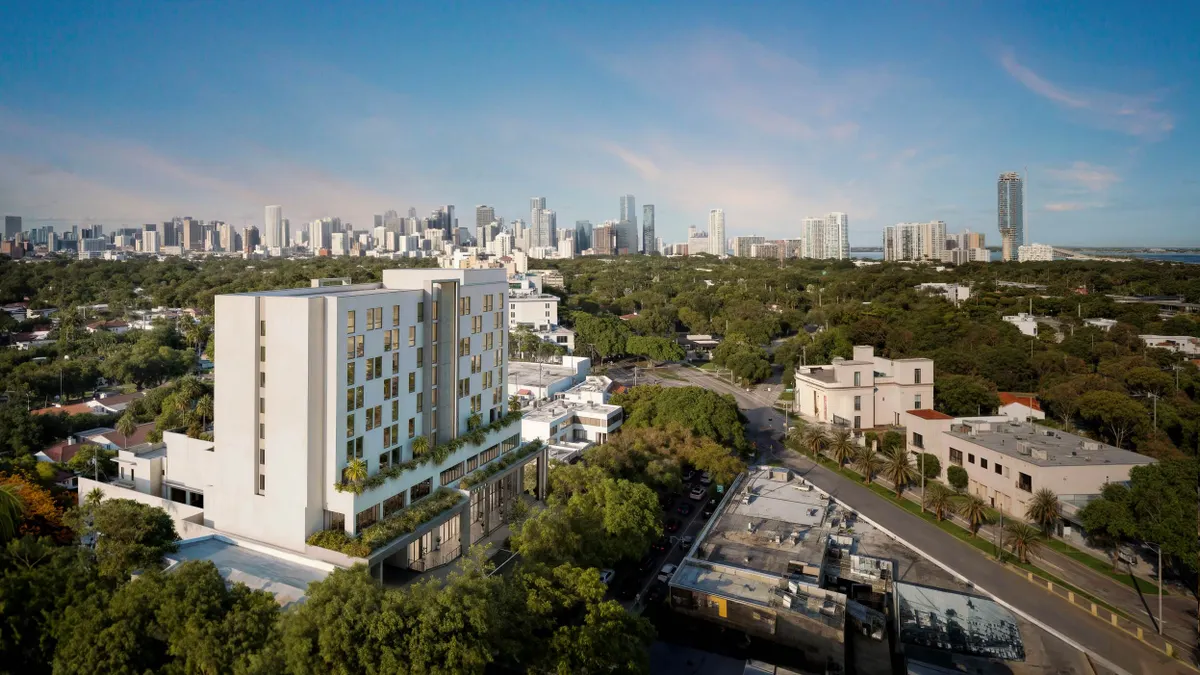This is the third in a series of three articles examining local policies that give tenants a right to cooling equipment. Click here to read the first story and here to read the second story.
Housing laws are really about public health, says New York City’s chief climate officer and Department of Environmental Protection commissioner, Rohit Aggarwala.
“We don't mandate that the paint job be attractive. We do mandate that it not be poisonous,” he said. “At all points in history, and in all points in the future, there is going to be some housing that is much less attractive, functional and pleasant than the rest. The question is, where do you draw the floor below which we consider someplace unfit to live?”

In a warming world, that floor may be moving. Heat is becoming fatal in areas of the world where it previously was not, Aggarwala said. That’s why New York City plans to develop a policy by 2030 requiring landlords to provide indoor cooling capable of bringing rental units down to a certain temperature in the summer.
Smart Cities Dive spoke with Aggarwala about why he’s optimistic about bringing the policy to the nation’s largest city — and why officials shouldn’t rush the process.
Editor’s note: This interview has been edited for length and clarity.
SMART CITIES DIVE: New York City’s sustainability plan, PlaNYC, lists developing a maximum indoor temperature policy as a priority. Why do you think the city should move forward on such a policy?
ROHIT AGGARWALA: While flood-related deaths get all the attention, heat is the impact of climate change that kills far more New Yorkers.
The average New Yorker is not really at risk of dying due to a climate-induced heat wave. The people who are at risk of dying, they are generally low-income; they are generally non-White; they are generally male; they are generally senior citizens. They have pre-existing medical conditions, and they live alone.
You might have an air conditioner, but your income constraints lead you to be so careful about [the cost that you might] leave the air conditioner off, sit in an overly hot room and suffer heat stroke that then leads you, potentially, to die.
What that means for us [in city government] is that as important as it is to think about city-wide outdoor cooling strategies — whether it's things around rooftops and urban greenery and canopy coverage — from a public health point of view, the intervention we need to prioritize is to make sure that people who are at risk have an air conditioner and are able to use it.
We have cooling centers, but the barriers to getting somebody to come to a cooling center are immense. If you are in that really at-risk category, you probably also have some mobility challenges. If you're in that category [in New York City], you almost certainly don't have a car. So we've got to provide cooling at home.
How do you think NYC should address that challenge of residents worried they can’t afford to turn on the AC?
We have consistently asked for the state and federal governments to help low-income New Yorkers afford cooling through the same programs that help them with heating. New York state’s Home Energy Assistance Program, which offers funds toward the cost of an air conditioner for eligible low-income New Yorkers, has been underfunded; this year, it ran out of money on July 19 and will not reopen again until next April. These programs need to treat cooling with the same urgency and resources as heating. Because heating is provided by the landlord [by law], heating affordability is only an issue for homeowners, while cooling affordability affects renters as well — which are the majority of New Yorkers, especially low-income New Yorkers.
The good news is, the truly vast majority of bedrooms in New York City have an air conditioner, in part because air conditioners are relatively cheap. The majority of residents in New York City Housing Authority apartments have air conditioners. And because electricity is built into their rent, they don't have a [cost] constraint with using it once they buy it.
So we're actually talking about a relatively small share of apartments [that a mandate would affect]. It is still a significant cost because we would have to impose a cost on landlords. The impact is that it turns what is now an option that the tenant has to pay for into an obligation on the landlord.
Because many of the buildings in question are rent-stabilized or might be nonprofit-owned affordable housing, we have to take into account how the affected landlords are going to pay for this, which is why it's not something that's already been turned into law.
The big opportunity, and the reason that we had the confidence to put this in PlaNYC, is that with Local Law 97, which requires the decarbonization of [many] buildings in New York City, we believe that most of the buildings that would have to comply with a new indoor temperature maximum will also have to do work on their heating systems [to comply with that law]. In many cases, we expect that the solution is going to be some form of window heat pump unit. Because a heat pump gives you heating during the winter and cooling during the summer, it makes it actually somewhat free for us to impose that [cooling] requirement in that context.
As we implement Local Law 97, we are working particularly with our colleagues at the Department of Housing Preservation and Development to think about what's the right way to impose this.
Do you see a timeline for enacting such a policy? Some advocates might point out that it’s already dangerously hot this summer.
We certainly all agree that the problem is already with us. But we also know that imposing a poorly designed requirement on apartments that don't have a ton of resources could have negative consequences if you wind up forcing a landlord to defer some other important piece of maintenance or whatever.
I’ve been surprised at the lack of data that many local governments have on what portion of rental units have cooling equipment.
For the buildings that have central air, that's registered with the Department of Buildings. But frankly, most of the buildings that are not going to have air conditioning are going to be old buildings, so by definition, they’re [using] window air conditioners, and you don't have to register your window air conditioner with the government. So there's no tracking. We've just got some survey-based data that gives us a sense and, frankly, anecdote.



